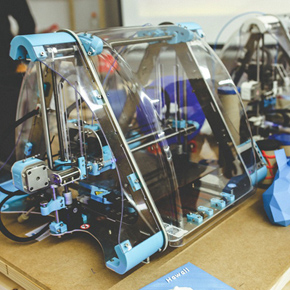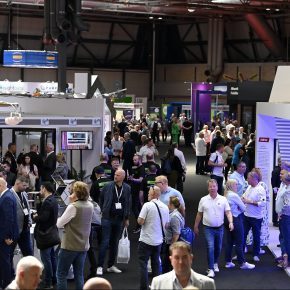
Five technological advancements that are altering the construction industry in 2016
It is no overstatement to suggest that technology has changed our lives. Its insidious tentacles have crept into every corner of our existence, so that the ways we connect, exercise, shop, and even find love have been fundamentally altered. Whatever you need to do, you can guarantee that there is an app to help you complete it faster, smarter, and more efficiently.
It is little wonder that this change has had a professional as much as a personal impact. Across sectors, technology has helped to improve the way that we carry out our jobs, and the construction industry has not escaped these rapid advances.
From the introduction of drones to the use of 3D printing, the industry we know is changing before our eyes. Here, we look at five of the most futuristic technologies, and what we can expect from them…
#1: Drones
Drones are one of the most exciting innovations introduced into the construction sector in decades, and already they are proving their worth.
Useful for surveying purposes, they provide real-time data on job progression, can identify potential hazards and quality issues, and help to mine a large amount of useful information through an economical medium.
Although their legality is a topic of controversy in many regions, they provide a state-of-the-art alternative to more traditional methods, and have been used with great success in a number of jurisdictions.
#2: Transparent Solar Panels
The second innovation on our list may sound less futuristic than its predecessor, yet its usefulness should not be underestimated. Although solar panels have been utilised by many architects and landscape consultants since their invention, all have found themselves limited by their unsightly appearance. Luckily, this is a problem that they need no longer face. Thanks to a team of chemical engineers from Michigan State University, an alternative has been produced, allowing solar energy to be generated without negatively impacting the design aesthetic.
#3: 3D Printing
Anyone with an interest in technology will already know about 3D printing, but not all will be aware of its application in the construction industry.
Already trialled by a number of international firms, it was used to construct no less than 10 homes in China in a single day. Early experiences of it suggest that its utility extends not only to increasing the speed of construction, but also to reducing waste material and project costs.
#4: Smart Helmets
Next on our list are smart helmets, the brain-child of U.S. based firm Daqri. Utilising 4D augmented reality technology, these innovative hardhats feature a transparent visor and special lenses, along with an extensive spectrum of cameras and sensors. Working together, these allow users to navigate their environment and gather information about it, making construction sites both safer and more efficient when smart helmets are in use. Additionally, they provide visual instructions for workers charged with complex tasks, negating the need for either smartphones or tablets, and thus freeing up their hands.
#5: Anti-Collision Software
Many of the innovations featured on this list aim to make construction sites into safer and more productive working environments, and anti-collision software is no exception. The 3D systems that are featured monitor a wide range of important details pertaining to construction site equipment, from position to movement, weight, wind speed, and so on. This can be displayed on both dashboards and mobile devices, allowing corrective measures to be taken whenever necessary in order to improve on-site safety.
The world as we know it is changing more quickly than ever before, and the construction industry is being pulled along with it. For those whose careers depend upon keeping up, know this: despite the challenges that getting to grips with new technology poses, there are some very exciting times ahead. Don’t get left behind: pool your resources and invest today.
Author: Marcus Turner Jones
Latest news

9th April 2025
Insight Data: Smart spending - how targeted marketing offsets rising costs
As ‘Awful April’ lands, fenestration businesses must use data-driven marketing to maximise impact, cut waste and stay ahead, says Alex Tremlett, Insight Data’s commercial director…
Posted in Articles, Building Industry News, Building Products & Structures, Building Services, Doors, Glass, Information Technology, news, Posts, Research & Materials Testing, Windows
9th April 2025
Saniflo: Retrofit 2025 at the Building Centre
Saniflo is delighted to announce a six-month collaboration with the Building Centre as a Principal Partner for ‘Retrofit 2025 – What’s Stopping Us’.
Posted in Articles, Bathrooms & Toilets, Bathrooms, Bedrooms & Washrooms, Building Industry Events, Building Industry News, Building Products & Structures, Building Services, Case Studies, Drainage, Exhibitions and Conferences, Facility Management & Building Services, Innovations & New Products, Interiors, Pipes & Fittings, Plumbing, Restoration & Refurbishment, Retrofit & Renovation
9th April 2025
FIT Show Launches Comprehensive CPD Learning Programme - Registration Now Open!
FIT Show, the UK’s leading trade event for the window, door, flat glass, hardware, components, and roofing industries, has unveiled its extensive learning programme for the 2025 event.
Posted in Architectural Ironmongery, Articles, Building Industry Events, Building Industry News, Building Products & Structures, Building Services, Building Systems, Continuing Professional Development (CPD's), Doors, Exhibitions and Conferences, Glass, Glazing, Innovations & New Products, Posts, Restoration & Refurbishment, Roofs, Seminars, Timber Buildings and Timber Products, Training, Windows
8th April 2025
First look at industry speakers for GEO Business 2025
GEO Business, the UK’s premier geospatial event, is set to return to ExCeL London on 4 – 5 June 2025, bringing together the brightest minds in the industry.
Posted in Articles, Building Industry Events, Building Industry News, Building Products & Structures, Building Services, Exhibitions and Conferences, Information Technology, Innovations & New Products, Restoration & Refurbishment, Retrofit & Renovation, Seminars
 Sign up:
Sign up: 
